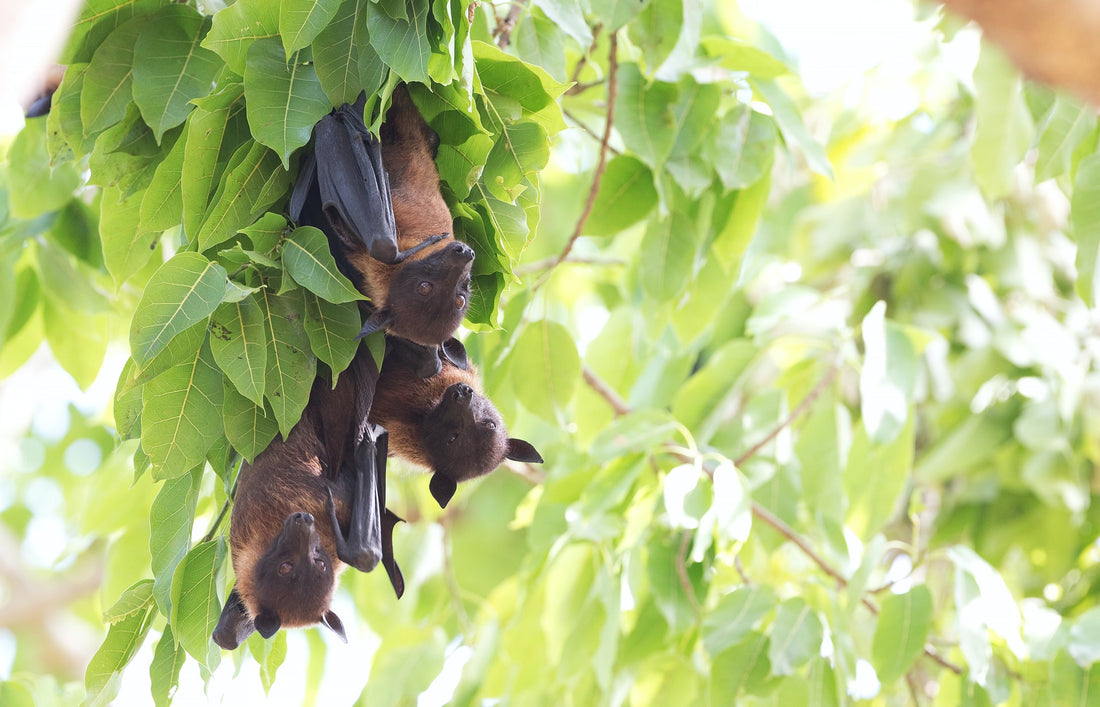Bats eat ALL the pests
Bats have enormous appetites and will eat between 6,000-8,000 bugs every night. Just one bat can eat 1,200 insects per hour. Talk about fantastic pest control! When bats are around, mosquitoes, moths, gnats, wasps, midges, and other bothersome insects are controlled naturally.Best of all, no chemicals are needed. Bats eat more insects than birds, and they do it mostly at night when the insects are the most active, making them a very effective insect control.
Bats are important pollinators
In the southwest, bats are essential pollinators for cacti and agave. These nectar-eating bats work just like bees, pollinating flowers and plants. Bats pollinate over 700 types of plants. Many of these plants rely on bats for their survival. Peach, mango, avocado, date, and fig trees benefit from having bats around to pollinate them.
Bat guano is an excellent fertilizer.
For centuries, farms relied heavily on imported bat guano to fertilize their extensive vegetable gardens. It contains crucial elements like nitrogen, potassium, and phosphate. These elements contribute to healthy root and flower growth. Bat poop (guano) is still sold commercially. However, if you provide a welcoming space for the bats, they will fertilize your garden for free.
How To Attract Bats
Like all animals, bats want a safe space with food, water, and shelter. The great thing about your garden or property is that the food source is already there. Bats will come to eat, but to get them to stay, you need to give them safe shelter and access to water.
- Bats seek out hollow trees, rocky ledges, and secluded crevices in the wild. In places without these available, bats will shelter in storm sewers, behind shutters, and attics. They like dark, warm, small spaces.
- Bat houses are also a great way to provide shelter. Bats like being in tree hollows, but if there is a lack of trees in the area, a bat house attached to a long pole will also be attractive to them. Or, attach the bat houses to the trees, so it feels similar to being high up in a hollow.
- Most bats swoop down low across lakes and ponds to get drinks of water. If nothing like this is available where you are, substitutions can be made. Tall birdbaths in an open space are good. A garden pond with short plants circling it is also inviting to a bat.
- If you know where bats are roosting, do not disturb them. In winter, they will hibernate and should be left to their beauty sleep so they can be ready and hungry when Spring arrives!
Why Providing for Bats is Important
Bats are losing their natural habitats because of too much human development, logging, and wind turbines. They also are struggling with diseases like white-nose syndrome. Bat populations are struggling, to say the least! And, it will be very bad for us if their populations seriously decline. We will need to use more chemicals to do the jobs bats do naturally.A colony of bats provides natural pest control, organic fertilizer, and helps your flowers, fruits, and vegetables grow. Attracting and encouraging bat populations is a win for your garden and yard, and it is a win for the bats.



